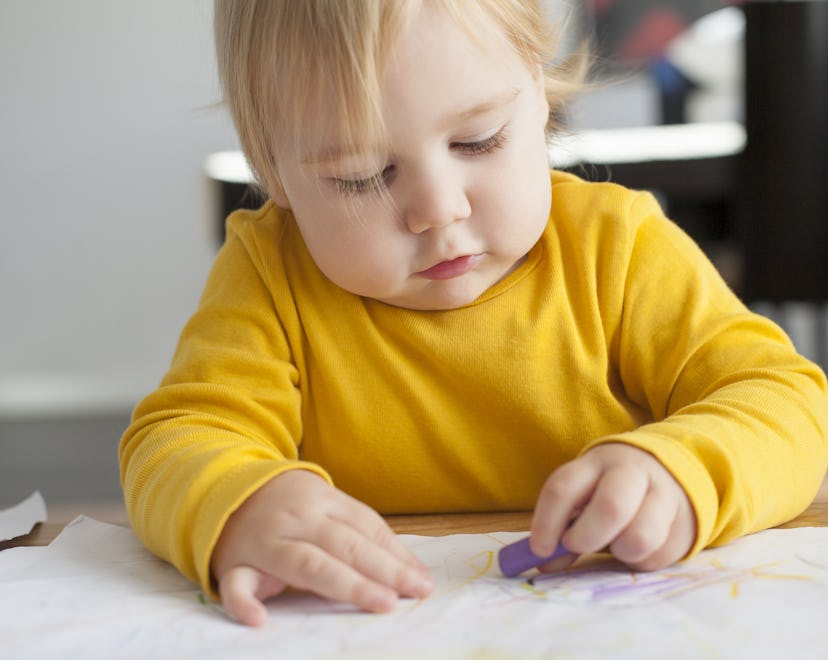Toddler

If Your Toddler Starts Munching On A Box Of Crayons, Here's What To Look For
It's no secret that toddlers are really odd little people — they have very specific likes and dislikes, their own language, and tend to err towards strange behavior. You try to understand, but most times, you fall short. It gets even more complicated if your toddler is exhibiting some behavior, and you're not sure if it's unsafe, or just plain weird. Like, if they start munching on their crayons. They're non-toxic, right, so is it OK? Or could it mean something more? Here's what to do if your toddler eats crayons, because it's always better to know than not.
According to the Illinois Poison Center, crayons, mostly composed of wax and pigments, are considered minimally toxic. Crayons, if ingested, will largely act like a mild laxative, and there's actually a bigger hazard from choking if the crayon piece is larger and gets lodged in your little one's throat. So after you ensure all of the pieces are out of your kid's mouth and give them a bit of water, keep an eye on your kiddo's stools — if he ingested a bit, stools may be a little bit loose. But, if you see continued vomiting, diarrhea or choking, call for help right away.
If your little one is a serial crayon eater, there might be a larger issue at hand. While chomping on non-food items is a basic right-of-entry into toddlerhood, some kids go beyond this innocent exploration. According to Kids Health, pica is an eating disorder that causes people to crave and eat non-food items like dirt, clay, soap, chalk, and yes, crayons. Pica usually affects kids in between ages 2 and 3, and people who have developmental disabilities (like autism). It can also surface in children who have had a brain injury, some pregnant women, and people with epilepsy.
If your child is eating non-food items regularly for more than a month, regardless of your attempts to stop it, it may be time to talk to your pediatrician. Pica can mean a number of things in a number of people, but is largely tied to nutritional deficiencies, developmental problems, or mental health conditions. It could also be a behavioral response to stress.
You should definitely talk to your doctor as soon as possible if your child is eating non-food items, because conditions like pica can result in a number of serious health issues — lead poisoning, constipation, diarrhea, intestinal obstruction or perforation, parasites, infection, or tooth and mouth injuries.
As Providence Health and Services noted, crayons specifically are largely non-toxic, and you most likely will only be dealing with rainbow colored poop if crayons are your kid's choice of non-food snack item. But pica in any regard should always be addressed.
For most kids, pica disappears as they get older, but for some, it is a lifelong battle. Your doctor will be able to help you manage pica in your child with strategies, medication, or other therapies.
If your kid is snacking on crayons in a much more random fashion, you can likely chalk it up to curiosity, oral fixation, or teething. You can try to get a handle on the crayon-eating by keeping them out of reach and only bringing them out when you're able to supervise. Also, make sure the art supplies you're purchasing are non-toxic and unscented (so as to minimize the desire to chomp down).
Kids are just weird sometimes, and you won't always be able to figure them out. If your little one ate a crayon or play dough or some paper here and there, it isn't the worst thing. Make sure all the pieces are out of their mouth, and give them a sip of water. Keep an eye out for symptoms (a little stomachache is probably likely), and call it a day. But, if eating non-food items is a regular thing, definitely get in touch with your doctor.